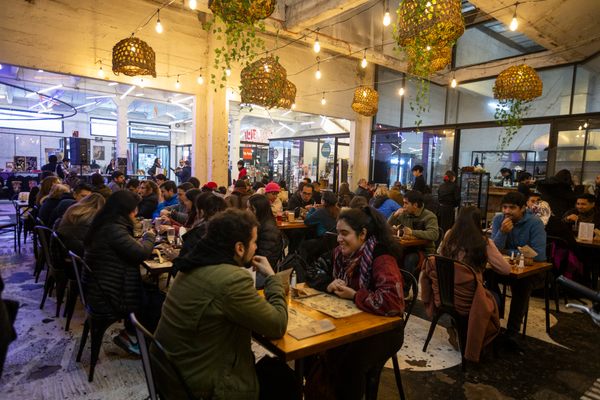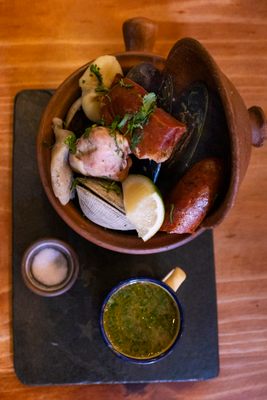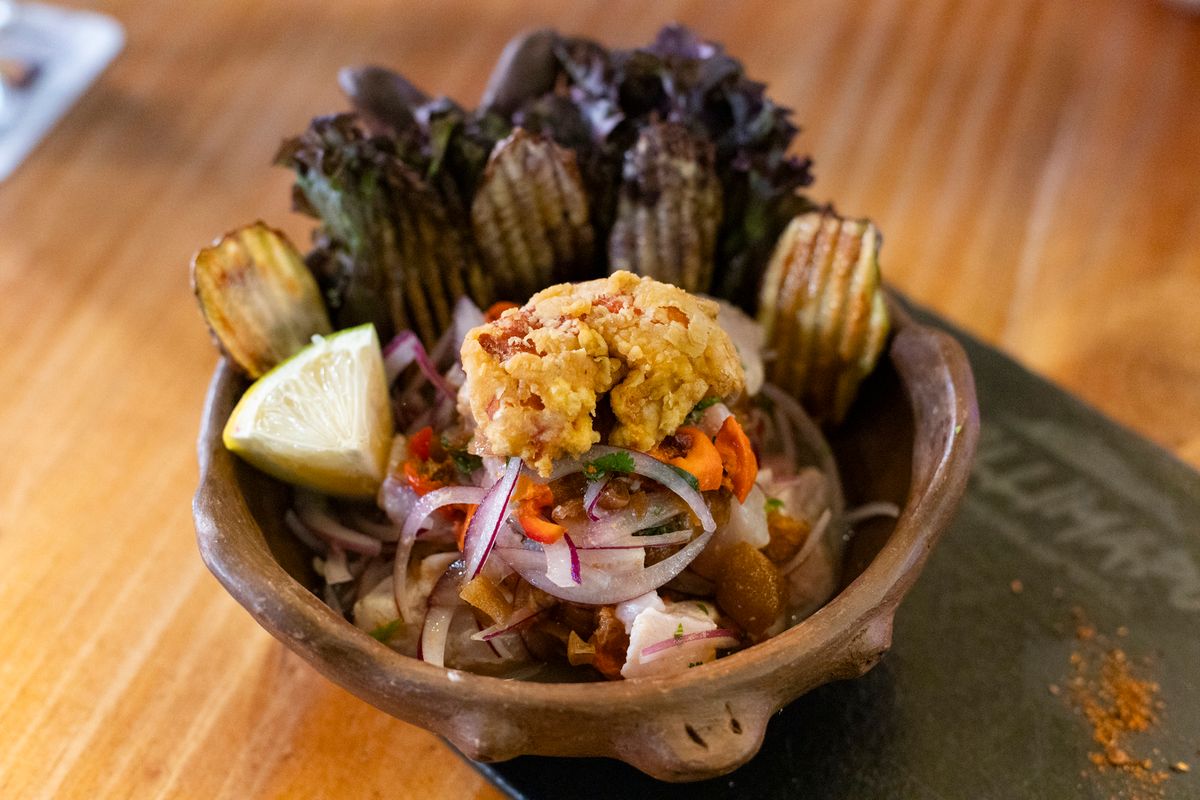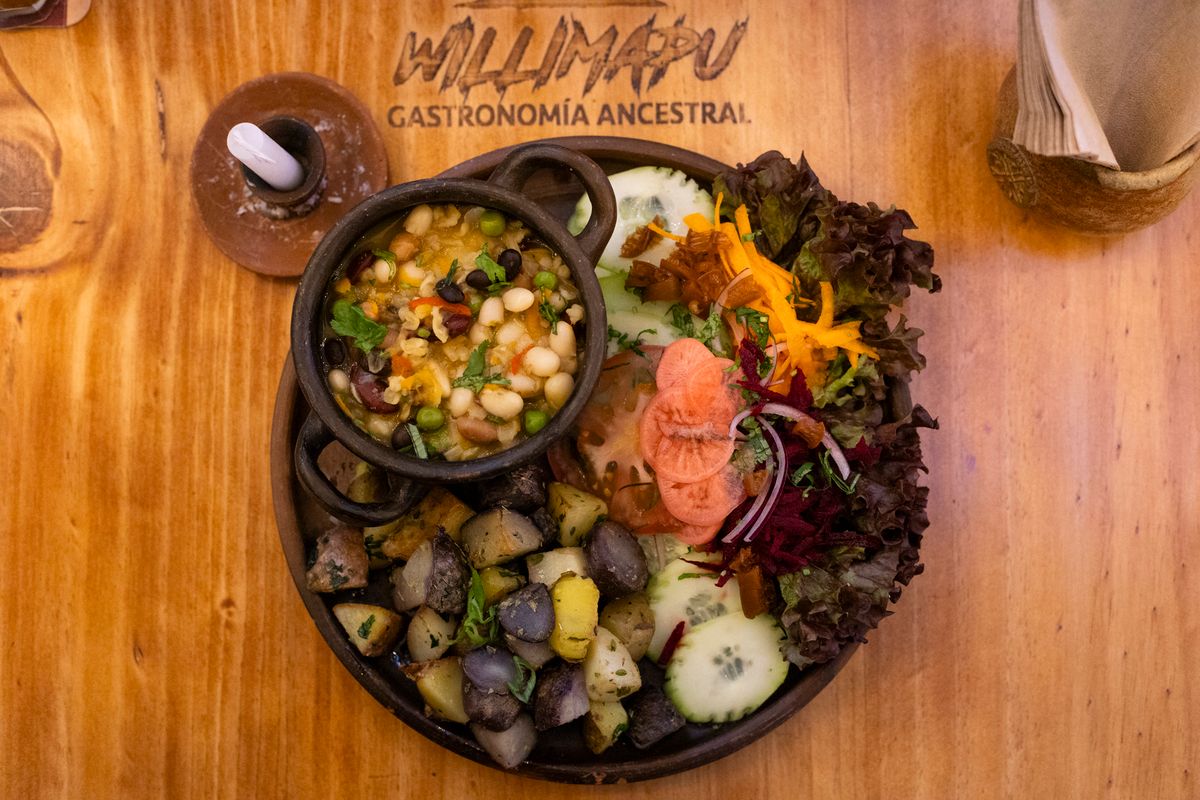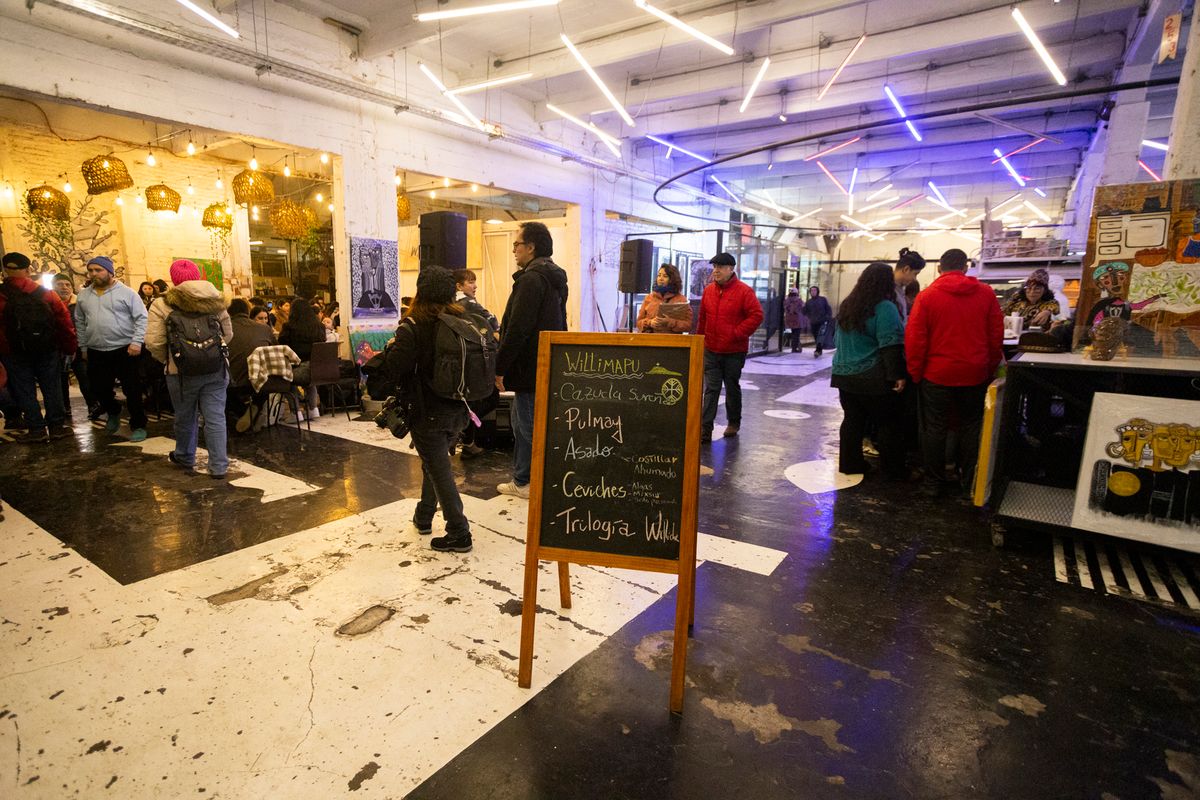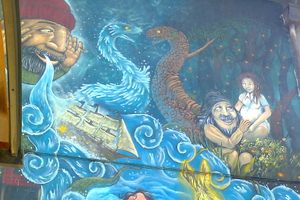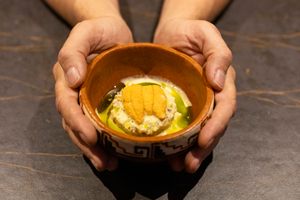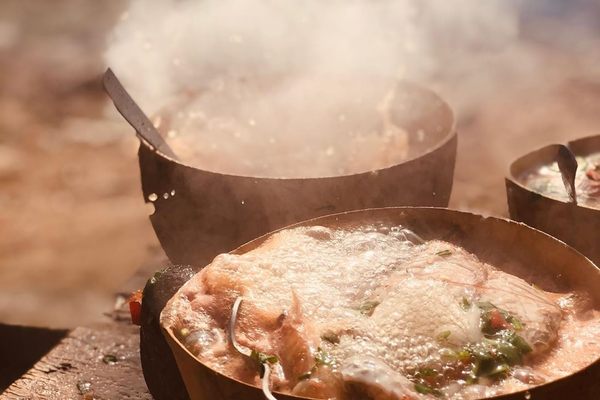About
Finding the unique cuisines of Chile’s 10 official Indigenous groups is surprisingly hard to do in the nation’s capital, even though many of its 7 million residents belong to these communities. One of the few restaurants here that does take inspiration from ancestral cuisines is Willimapu, which honors the culinary traditions of the Mapuche people of south-central Chile.
Some 1.8 million Chileans belong to the Mapuche community, making it by far the nation’s largest Indigenous group. Chef Cecilia Loncomilla Quintul hails from the Huilliches, who are the southernmost Mapuche group, native to the island of Chiloé and regions just north of Patagonia. Huilliches have a strong connection to the sea, so shellfish, seaweeds, and saltwater fish all play a big role in the menu of Willimapu.
Heavily featured in many plates is congrio, a fleshy conger eel popular in coastal fishing villages. There are also ceviches that mix lemon-cured fish with cochayuyo seaweed and orange piure tunicates (which have a flavor similar to sea urchins). The most iconic plate is pulmay, a kitchen-friendly adaptation of the traditional Mapuche curanto, which is composed of shellfish, potatoes, and meats that are typically all cooked for one hour in an earth oven with heated volcanic stones. At Willimapu, where it’s cooked on the stove, the curanto comes with ribbed mussels, longaniza sausage, and two types of potato-based dumplings (milcao and chapalele) native to the island of Chiloé.
Other Mapuche dishes on the menu include the bean stew pisku, the potato stew charquicán, and the risotto-like cremoso de mote, made with husked wheat. Meanwhile, on each table next to the salt shaker is not black pepper but rather the red Mapuche spice merkén, made from smoked chili peppers. (Chilean food is notoriously spice-free, but merkén is a major exception.)
While the food at Willimapu harkens back to ancestral traditions, the vibe is anything but traditional. The restaurant lies in a hip industrial-chic corner of Persa Bio-Bio, Santiago’s largest market, next to art shops, book stores, and other independent stalls selling houseplants, second-hand clothing, and antique curios. Tables and chairs sit atop a painted concrete floor, and the neighboring hall is lit by a sea of neon lights. Like the rest of the market, the restaurant is open only on Saturdays and Sundays for lunch, when you can expect big crowds and live music throughout the meal.
Yes, the service at Willimapu is frequently slow. And yes, the portions are a bit small by Chilean standards. Yet, when the food arrives, it comes in a wonderful array of clay vessels made in the south. There are also excellent pisco sours to tide you over while you wait. One comes with the antioxidant-rich maqui berry, while another has the guava-like murta berry. Both berries are equally satisfying in the cakes served for dessert.
Related Tags
Published
June 1, 2024

